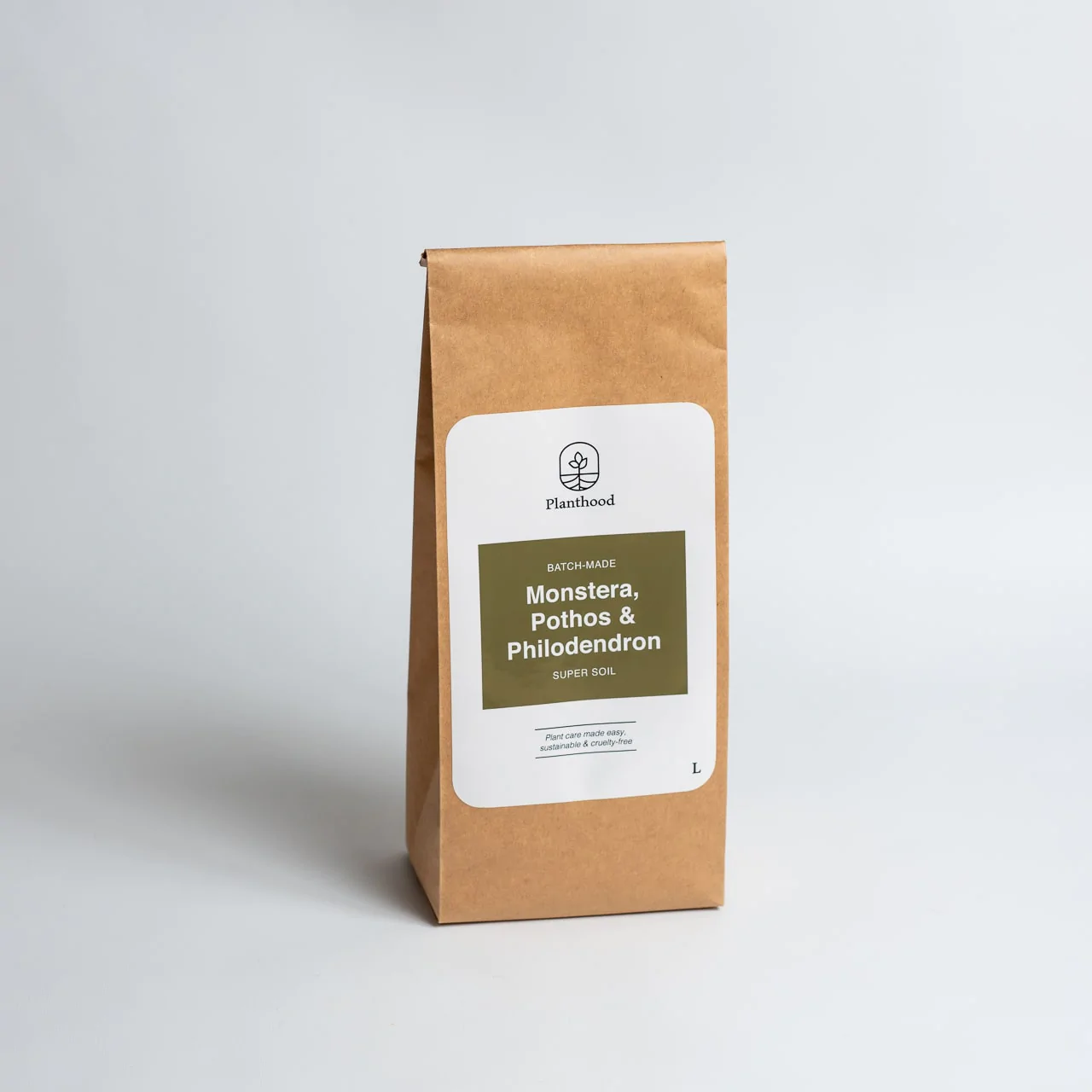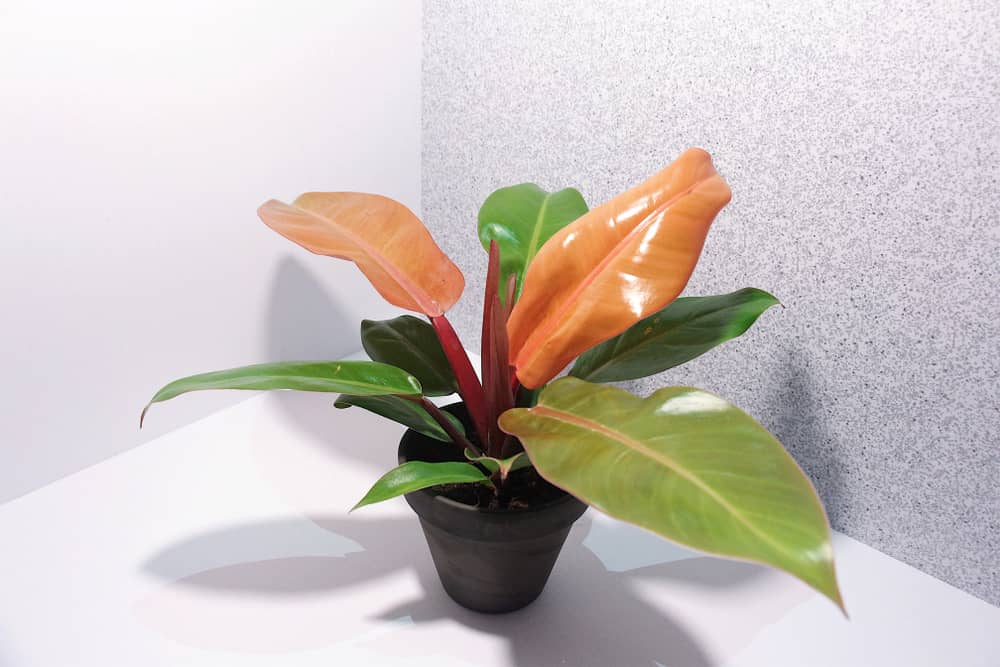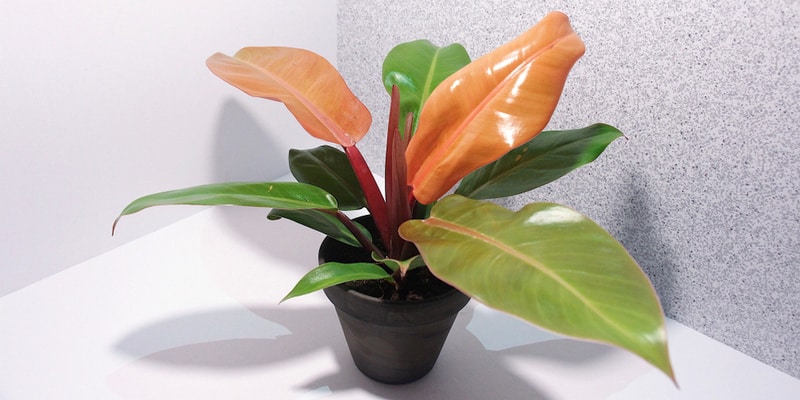In the Philodendron world, flashy foliage is the name of the game. These leafy houseplants are hard to beat when it comes to their dazzling colour, easy-care nature, and fast growth. There are plenty of Philodendrons that will catch your eye such as the graceful Philodendron Gloriosum, the resplendent Philodendron White Princess, the phenomenal Philodendron Pink Princess, and the electrifying Philodendron Brasil.
But if you want a Philodendron that will give these famous beauties a run for their money, there’s no need to look further than the Philodendron Prince of Orange. This variety is an absolute stunner and true plant celebrity in its own right.
The best part is, you don’t need a green thumb when tending to the Philodendron Prince of Orange! Learn how to grow one of these outstanding ornamentals with our complete care guide below.
A brief overview of the Philodendron Prince of Orange
The Prince of Orange is an exquisite Philodendron hybrid that’s sure to make waves with its brightly coloured foliage. If you start out with a young Philodendron, you’ll be lucky enough to witness its leaves displaying multiple shades throughout its lifetime. We’re talking about three chromatic stages here: new growth first appears as starburst yellow, then gradually transitions into orange. The long, oval-shaped foliage then takes on a deep green shade as the plant matures.
As with other Philodendron varieties, the Prince of Orange belongs to the Araceae family and has its roots in South America. It is a ground-level plant that is accustomed to living under the canopy of taller trees. This means that your Prince of Orange loves any environment that mimics tropical weather — high humidity, warm temperatures, and partial shade are your Philodendron’s best friend.
Its compact size and self-heading structure make the Prince of Orange suitable as a potted ornamental houseplant. When given proper care, a fully grown Philodendron Prince of Orange can reach a height of 60cm indoors.
The Philodendron Prince of Orange vs. other varieties
When you’re surrounded by fabulous fronds of the same hue, how will you know which Philodendron is which?
Here’s a quick way to identify the Philodendron Prince of Orange from similar-looking varieties:
Philodendron Autumn vs Philodendron Prince of Orange
To know if the golden-leafed Philodendron in front of you is a Philodendron Autumn or Prince of Orange variety, check for leaf width and colour. Philodendron Autumns have narrower, more copper-coloured leaves. Compare this with the Prince of Orange’s foliage, which is wider and lighter orange in hue.
Philodendron Prince Albert vs Philodendron Prince of Orange
The Philodendron Prince Albert and the Philodendron Prince of Orange bear a striking resemblance to each other. However, a closer look will tell you that you’re looking at two different varieties. For one, the Prince of Orange’s foliage is narrower and more elongated than the leaves of the Prince Albert. The centre vein of the Prince of Orange is also more colourful — it follows the leaf’s hue and can present as red, orange, or green. Compare this to the Prince Albert’s centre vein, which is pale green in colour.
How to care for a Philodendron Prince of Orange plant
Don’t let the Philodendron Prince of Orange’s magnificent foliage intimidate you — this down-to-earth luminary isn’t born with a silver spoon in its mouth. With its fast growth and easy-care nature, it’s no surprise why it’s well-loved among indoor plant collectors. Its resistance to fungal leaf spot and quick recovery from mild root rot definitely makes it a keeper.
To keep your Prince of Orange plant healthy and vital-looking, give it bright, indirect sunlight, moderate to high humidity, well-draining soil, and adequate watering. Place your houseplant in a pot with drainage holes to prevent it from getting waterlogged, and you’re good to go.
Light requirements
Maintaining your Prince of Orange’s brilliant colour is a juggling act, but it shouldn’t be too challenging once you get the hang of it. All you need to remember when caring for your Prince of Orange — or any Philodendron, for that matter — is to pick a spot where there is bright, indirect sunlight.
Giving your Philodendron Prince of Orange sufficient filtered light keeps its vividly coloured foliage in tiptop shape. It also helps your plant grow faster. It’s important to strike a balance, however. Too little light makes for dull-coloured and weak-looking leaves. On the other hand, too much light can scorch your Philodendron’s leaves and cause your plant permanent damage.
Pro tip: Not sure if the spot you have chosen for your Philodendron is too bright or too dark? Let’s keep your Philodendron’s light requirements simple – any room in your home is a great place to position your houseplant, as long as light is able to reach it. Low light conditions shouldn’t be a problem, either. You can use artificial illumination as a substitute for indirect sunlight.
Soil requirements
As a rule of thumb, Philodendrons grow best when planted in moist, well-draining soil. Use an organic planting mix made of peat moss and perlite for best results.
Recommended: Philodendron Super Soil

Planthood Potting Mix
Designed exactly with your philodendron’s origins in mind, Planthood’s barky mix mimics the origins of these tree-huggers which thrive on aerial roots and attach on other trees for support. Get ready for your plant to grow wild!
Watering needs
When it comes to Philodendron care, well-draining soil and judicious watering go hand in hand. Water your Prince of Orange until the soil is moistened all the way through, but make sure not to overwater. Allow the soil to dry partially before watering again. Philodendrons are plants with aerial roots and don’t do well in soil with too much water.
Pro tip: Waterlogging is the primary cause of a Philodendron’s yellowing leaves and root rot. To prevent your Prince of Orange from getting waterlogged, try this neat trick: place your finger on the soil and test for soil moisture. If the soil feels moist, there’s no need to water your plant. On the other hand, soil that’s extremely dry is a signal that your plant needs an urgent watering.
Climate requirements
The Prince of Orange and its other Philodendron cousins are true tropical natives — they love an environment with plenty of warmth and humidity!
Your Prince of Orange can survive a once-in-a-blue moon watering schedule provided there is ample moisture in the environment. Keep your Philodendron’s foliage plump and healthy-looking by placing your plant in a warm and humid area in your home.
Pro tip: Is your Prince of Orange starting to look lacklustre? Position it in your kitchen or bathroom to nurse it back to health. Your Philodendron loves the high humidity and warm temperature in these areas. After a while, you’ll start to see your plant’s leaves regain their vigour.
Fertilising
Fertilise from spring through summer to boost the growth of your Prince of Orange. Use a slow-release balanced fertiliser diluted at half-strength to prevent leaf burn.
If you don’t want to overthink your indoor plant food, try out Big Green Monster’s fertiliser for healthy plants year-round.
Leaf care
Philodendrons tend to grow towards the light. To maintain your Philodendron Prince of Orange’s vibrant colour, rotate the pot occasionally to ensure that all leaves receive an equal amount of sunlight.
When you see your Prince of Orange’ foliage starting to collect dust, wipe the leaves gently with a damp cloth to reveal their waxy texture. Doing this will also keep your Philodendron Prince of Orange healthier as it is able to take in more humidity and sunlight.
How to propagate Prince of Orange Philodendrons
The Philodendron can be propagated from stem cuttings with minimal effort. Simply follow these steps to be able to grow your own Prince of Orange at home:
- Step 1: Cut the stem right below the node using clean, sharp scissors. The node is where new roots will start to grow, so make sure to include at least one or two in your cutting.
- Step 2: Place the cutting in a jar of water and make sure to change the water every 2 days to keep it clean. Allow the new roots to sprout.
- Step 3: Transfer the cutting to a pot filled with a well-draining planting mix.
The best time to propagate your Prince of Orange is during spring and summer, when the weather is warmer.
FAQs
Is the Philodendron Prince of Orange rare?
While the Prince of Orange is an illustrious Philodendron variety with splendid leaves, it’s more common than most people think. It’s fairly easy to get your hands on one online as this variety is easy to propagate.
Another thing you will love about the Prince of Orange is its competitive price point. Unlike the Pink Princess which can cost you an arm and leg, the Prince of Orange won’t break the bank. A 300mm pot can cost between $40-$45 depending on the nursery you’re sourcing your plant from.
Is the Prince of Orange an indoor plant?
The Prince of Orange is a Philodendron variety that’s made to thrive in indoor conditions. Because it requires minimal maintenance, gardening beginners will enjoy having it as a houseplant. There’s no need to worry about watering schedules and such, but if you aren’t feeling confident yet about how to give your plant proper TLC, you can always call professional gardeners for help.
As an indoor plant, the Prince of Orange functions as an air purifier and ornamental. Make sure to position your plant in an area where it can be fully displayed in all its golden glory.
When is the best time to re-pot a Prince of Orange?
The best time to re-pot your Prince of Orange is when it has exceeded the size of its pot. When transferring, take care to pick a pot with a drainage hole. The pot shouldn’t be too big, either, to prevent waterlogging and development of root rot.
Also refrain from transferring pots too often, as this can distress your plant and cause it to weaken.
Why is my Philodendron Prince of Orange not orange?
If your Prince of Orange doesn’t seem, well, orange, you need to check its environmental conditions. The most common cause of an underperforming Philodendron is lack of light or inadequate watering. For a vividly coloured Philodendron Prince of Orange, place it near a window and let it soak plenty of bright, indirect sunlight.






